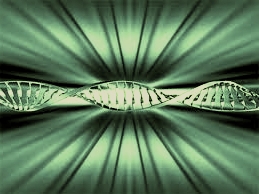Click on a section title to go directly there.
Introduction
Privacy of DNA Results
Why We Don’t Use Ancestry’s DNA Tests
How DNA Jumps Brick Walls
About the Pemberton DNA Project
How the DNA Sample is Gathered
Who Should Test and Which Test is Best
How to Join the Pemberton DNA Project
How to Donate Funds to the Pemberton DNA Project
How to Help Gather Pemberton DNA for this Project
How to Get Help with DNA Questions
DNA data (both Y-DNA and autosomal) simply and painlessly gathered from living Pemberton progeny, can make the usual documentary research more efficient and accurate. Here’s why.
The genealogical researcher approaches his work with a mind set or expectation of what he is looking for. Like it or not, he is forced to make some assumptions and his work is largely about trying to verify those assumptions. For example, he assumes that the parents will be biological rather than adopted, that when he finds several families in a geographical area with identical surnames they will be closely related, etc. DNA can make a very significant contribution just at this point and offers valuable assistance to the researcher. Here’s a case in point from the very first two tests done under the Pemberton DNA Project:
There were two known Pemberton lines running back through Virginia. Line A is traceable into Cheshire, England. Line B has only been documented back into the Virginia colony. Researchers working on these lines found several contemporary Pemberton families in the colony and supposed that the lines would merge in Virginia. All their efforts were coloured by that assumption. There was a presumption that the two researchers were rather close cousins and that the two tests would show only one or two different markers. However, there were four markers that were different! This completely changed the mind set and goals of the researchers for now they knew that instead of looking for a common ancestor in Virginia, they had to watch for clues that would keep the two lines completely separated for at least several more generations. This was an important break through for it changed both the kind of data sought and the interpretation of the data found. It is quite possible that the expense of DNA testing can be more than recouped by reducing the costs of documentary research.
The DNA markers that are tested for the Pemberton DNA Project are really only useful for genealogical purposes. They have no value for medical purposes. Ordinarily, the results of tests in the Project are published on this website. It is possible to join the Project and not have the results published. However, by joining the Project, the donor thereby approves the use of his test results for the purposes of identifying branches of the Pemberton population. Such use requires that the Project Administrators have access to and utilize the test results. If you are interested in joining the Project but have privacy questions, please contact us for any clarification needed.
Why We Don’t Use Ancestry’s DNA Tests
A Y-DNA test evaluates genetic markers on the Y-Chromosome which makes it the best for tracking a surname because Y-DNA is handed down only from fathers to sons just like surnames. The test Ancestry uses, as of this writing, is not a Y-DNA test. Even if they eventually offer a Y-DNA test result, they will probably not be testing the same 37 markers that Family Tree DNA tests. And even if they did that, it would still not be nearly as convenient to compare test results as it is when they are all in one company’s webpage. It just makes a lot of sense to keep all the tests at Family Tree DNA. If you have already had a Y-DNA test at a different lab, send an email to DNA@pembertonfamily.com and we’ll see what we can do with it.
A DNA test result that exactly or closely matches another one in the Pemberton DNA Project proves that the two samples come from the same branch of the family tree. That means that the two people should at least work closely on their documentary research because whatever amount of family history the two have already uncovered, they will find clues to each other’s history in their findings. That’s the worst case. In the best case, the DNA result will prove a common ancestor in a branch that is already well documented and the new sample will definitely lead to a connection into that branch. Thus, a brick wall may be breached by proving a relationship where no historical documents can be found.
About the Pemberton DNA Project
There was a thorough search made of the available laboratories for genealogical DNA testing. Family Tree DNA (http://familyTreeDNA.com) was chosen as host for the project because its data base was more than ten times larger than the next one, their prices were very competitive, and their work was rarely criticized. As of this writing, they have over 14,000 DNA profiles from England.
One of the not-so-obvious aspects of the Project is that each new test makes the previous ones more valuable and useful. For example, when a new sample came in that was a perfect match for the DNA of George Pemberton, b. ca. 1655 in Cheshire, England, the accuracy of four other DNA tests was proven and the documentary genealogy of three other members of the PFWW was positively and conclusively confimed. You can see the way their DNA moved down these lines here.
How the DNA Sample is Gathered
Family Tree DNA supplies a test kit containing three cheek swabs and three small vials to contain the three samples. (They take three: one for the initial test, a second in case there is trouble using the first, and a third is stored for future use should the person decide they would like to have more markers tested.) The three swabs are rubbed inside the cheeks and then deposited in the vials and mailed back to Family Tree DNA. The scraping of the cheeks is not painful, is not embarrassing and is not difficult. The test could be easily and painlessly administered to an invalid.
Who Should Test and Which Test is Best
The Y-DNA (males only) test is the one you want to use if you want to validate that this male is descended from one of the branches of the Pemberton family. Since the genius of the Y-DNA approach to genealogy depends on the fact that some of the markers examined by the laboratory change more frequently than others as DNA is handed down from father to son, it is helpful to get your sample from the person who is probably the oldest Pemberton you can identify in your Pemberton line. In other words, do your best to minimize the number of generations going back in time – a brother would be OK but his father would be better and his grandfather still better. A great uncle might be the best for the Y-DNA test.
The Family Finder, autosomal test works best for
How to Join the Pemberton DNA Project
To join this Project, it is only necessary to purchase a Y-DNA-37 test within the Pemberton surname at Family Tree DNA. [Editor’s Note: Please see Updated Ordering Instructions] Just enter “Pemberton” in the search box at the top of the page then click on “Pemberton” in the list of 3 groups on the far right. However, you can usually save about by purchasing it from the Guild of One-Name Studies. They have purchased a large block of these tests and provide them at a substantial discount. Click the Updated Ordering Instructions link above to explore that option.
Typically, you would order a test kit posted to you, however, if your DNA test results are already at Family Tree DNA you can identify the kit number and your test will be added to the Pemberton DNA Project.
Problems?? Please send an email to DNA@pembertonfamily.com. If you have any questions about anything regarding the Pemberton DNA Project, how to order, etc. Please be sure to ask. Use the same email address.
How to Donate Funds to the Pemberton DNA Project
Donations to the Pemberton DNA Project fund can be made by posting a cheque to the Treasurer of the PFWW. The correct post address for the Treasurer can be obtained by email to treasurer@pembertonfamily.com. It is best not to donate through the Family Tree DNA website for the Pemberton DNA Project because the Pemberton Family World Wide is a member of the Guild of One-Name Studies which has already purchased a block of test kits and offers them at a discount.
How to Help Gather More Pemberton DNA for this Project
First; it is important to understand that each new test makes all the others more useful and valuable, so there is good reason to promote and assist this project any way you can. There are many Pembertons who would be happy to contribute their DNA samples, but their discretionary funds are limited. The Pemberton Family World Wide DNA Project would be keen to assist these people, some of whom carry the precise DNA needed to help identify the major branches in the Pemberton family lineage. An unspecified contribution would allow us to advertise to these people that we can offer a discount (partial or complete) to assist them. If you are interested in helping in this way, please seriously consider the great assistance this would offer to the documentary research which must be done anyway, but which is always more efficient when there are DNA samples to render guidance. Please contact the Pemberton DNA Project administrator here: DNA@pembertonfamily.com or just go ahead and make a donation. It can be anonymous if you prefer.
A second way to assist is to find and encourage Pembertons you know to become involved by contributing their DNA.
How to Get Help with DNA Questions
If you need more information about DNA testing, how it works, what it does, what it doesn’t do, etc, here is a not too technical article on the topic: http://genealogy.about.com/library/authors/ucroderick1e.htm. Here is a pamphlet on genealogical DNA: https://www.familytreedna.com/pdf-docs/Interpreting-Genetic-Genealogy-Results_web_optimized.pdf.
If you still have questions, do not hesitate to contact the DNA expert at the Pemberton Family World Wide. Send an email to DNA@pembertonfamily.com.


